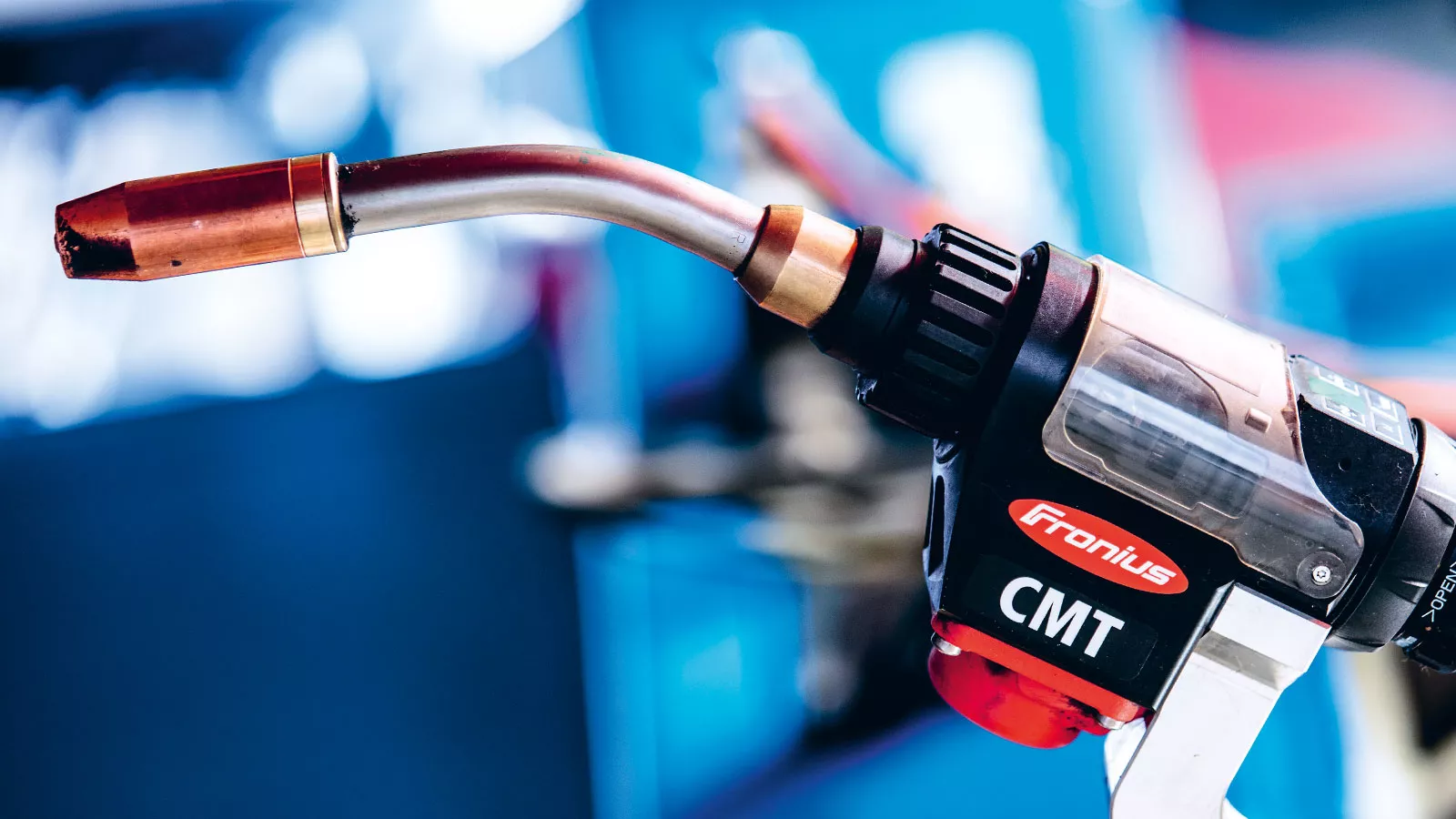Layer by layerCost effective manufacturing of metal componentsWire Arc Additive Manufacturing
Additive manufacturing processes allow users to practically conjure up components out of thin air – in fact, layers of liquid or powdered material are gradually built up on a base plate. With WAAM, this is carried out using a consumable wire electrode – the process itself being based on arc welding. Generative manufacturing techniques are particularly suited to producing complex component geometries. In addition, parts can be manufactured at low cost and extremely quickly – which makes WAAM a very attractive option for prototype construction and small batches. The processing time, tool wear, and material loss are all considerably lower than when milling out the workpiece from a solid block.
“COLD” WELDING PROCESS ACHIEVES OPTIMUM RESULTS
The stability of the welding process and heat dissipation are crucial factors when manufacturing components using WAAM. The welding process must apply as little energy as possible, so that the lower layers do not begin to melt again. The welded layers must also be consistent, spatter-free, and even. If any flaws were to occur, these would be replicated in each subsequent layer. The “cold” welding process from Fronius, Cold Metal Transfer (CMT), meets all of these requirements.
Two process control variants of CMT are particularly well suited to WAAM. The first of these is the CMT additive process characteristic, which has been optimized for WAAM. It achieves good deposition rates and only transfers a low level of heat to the component. The CMT Cycle Step variant reduces the arc power even further using targeted deactivation during the process phase. However, more time is needed to build up the individual layers as the deposition rate is lower.
What is WAAM?
In wire-based generative manufacturing processes such as WAAM, a laser, electron beam, or arc is used to melt a wire-shaped filler metal, which is then used to build the component. This type of process is generally much quicker than powder-based processes. The deposition rate of the WAAM method for steel materials can be up to four kilograms per hour, with multi-wire solutions potentially leading to even higher deposition rates in the future.
An additional advantage for users is that WAAM only requires a suitable welding system: expensive, specialist equipment is simply not needed. There are also a number of certified wires already available for the arc process. There are relatively few materials available for powder-based processes, as it can take years to acquire the necessary certification and to produce data sheets, since the use of metal powder is a relatively new Technology.
PRACTICAL WAAM APPLICATIONS
One example of the successful application of WAAM are the fan impellers used in the electronics industry, which are made from high-quality materials. Milling the workpiece is very expensive due to the high rate of material consumption. Casting is also not always able to meet the critical metallurgical properties required for walls just 1.5 mm thick. Using the CMT Cycle Step process, WAAM can be used to additively manufacture and repair this type of fan impeller blade using nickel-based alloys.
WAAM is also used to manufacture titanium components in the aviation industry. These components would otherwise usually be milled, causing up to 90 percent of the material to be lost and resulting in high costs, long machining times, and costly tool wear. With WAAM, however, the only additional work that is required is to smooth component surfaces. Components produced using CMT additive do not exhibit any problems with lack of fusion and have impressive metallurgical properties. This also leads to reduced processing times, wear, and manufacturing Costs.

